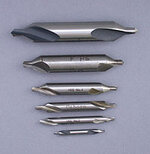PenMan1
Member
I've been teaching an "alternative materials" turning class. At the end, I mentioned "best practices". A question came. "What would YOU always do the same way, if you could only do ONE thing the same each time". In other words, what is THE most important thing?
Since we had been working with very brittle acrylics and making two piece pens, my answer was "always drill from the centerband toward the ends on every two piece pen". They "got" this because of the difficulty in pattern matching around cracks.
With this body of pen makers, we have an opportunity to make a "BEST PRACTICES" list that should be observered every time we set out!
If this thread turns out as I hope, we'll have a "BEST PRACTICES IN PEN MAKING" tutorial for the library.
Please consider carefully and add your best answer.
Since we had been working with very brittle acrylics and making two piece pens, my answer was "always drill from the centerband toward the ends on every two piece pen". They "got" this because of the difficulty in pattern matching around cracks.
With this body of pen makers, we have an opportunity to make a "BEST PRACTICES" list that should be observered every time we set out!
If this thread turns out as I hope, we'll have a "BEST PRACTICES IN PEN MAKING" tutorial for the library.
Please consider carefully and add your best answer.
Last edited:

